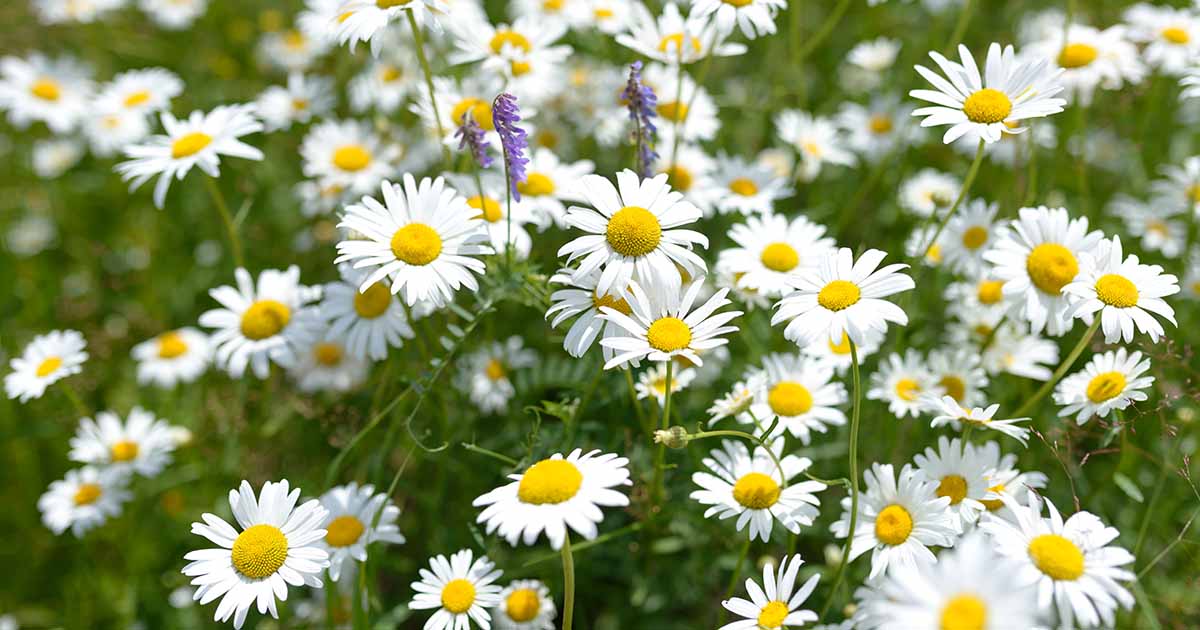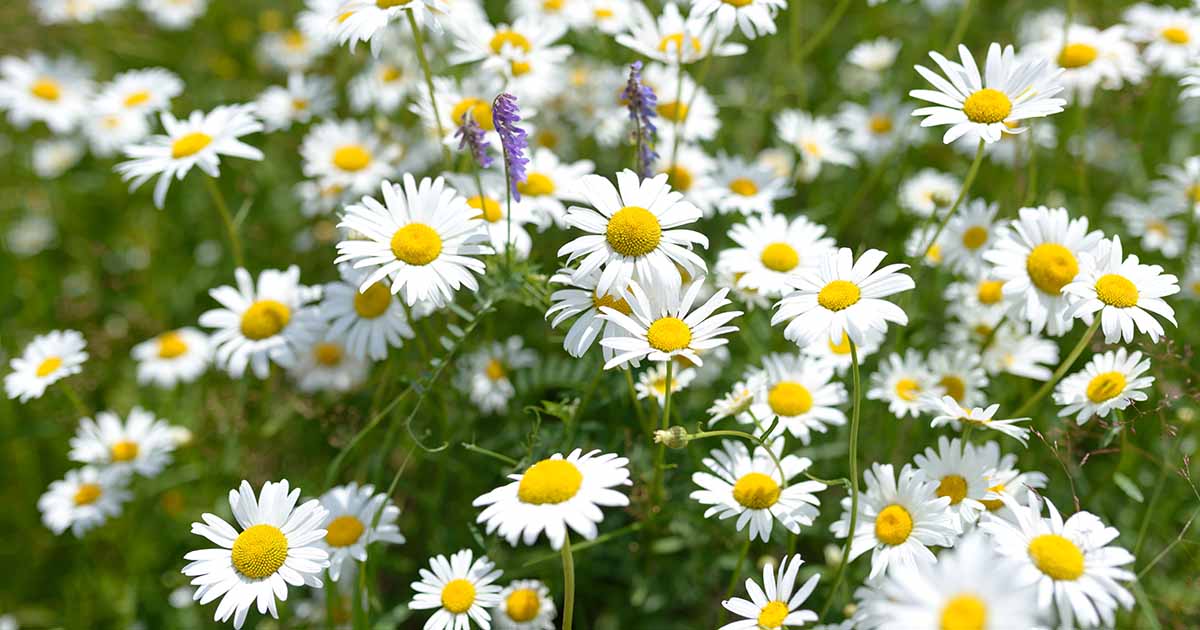How To Grow A Chamomile Lawn In Shady Areas – Imagine a lush, fragrant lawn that thrives even in the deepest shade. This is the beauty of chamomile lawns, offering a unique alternative to traditional grass. Chamomile, known for its delicate daisy-like flowers and calming aroma, can transform a shady corner into a vibrant and inviting space.
This guide will equip you with the knowledge and steps to create your own chamomile lawn in the shade, from site preparation to ongoing care.
Chamomile lawns are becoming increasingly popular for their low-maintenance nature and adaptability to various conditions. While most lawn grasses require ample sunlight, chamomile thrives in shade, making it ideal for areas where other lawn options struggle. The soft, fine texture of chamomile creates a pleasant surface for walking and lounging, while its aromatic flowers attract beneficial pollinators and add a touch of natural beauty to your landscape.
Introduction to Chamomile Lawns
Chamomile lawns offer a beautiful and fragrant alternative to traditional grass lawns. They are low-maintenance, drought-tolerant, and provide numerous benefits for both humans and the environment. Chamomile lawns are particularly well-suited for shady areas, where traditional grass struggles to thrive.
Advantages of Chamomile Lawns in Shady Areas
Chamomile lawns are a great choice for shady areas because they can tolerate low light conditions better than most traditional grasses. Here are some advantages of growing chamomile lawns in shady areas:
- Tolerance to Shade:Chamomile plants can thrive in partial shade, making them ideal for areas that receive limited sunlight. Unlike traditional grass lawns, which require full sun, chamomile lawns can still flourish even under the shade of trees or buildings.
- Drought Tolerance:Chamomile lawns are known for their drought tolerance, making them a sustainable choice in areas with limited water resources. They can survive with less water than traditional grass, reducing your water bill and helping to conserve water.
- Pest and Disease Resistance:Chamomile plants are naturally pest and disease resistant, requiring minimal use of pesticides and herbicides. This makes them a safer and more eco-friendly option for your lawn.
- Attracts Beneficial Insects:Chamomile flowers attract beneficial insects, such as ladybugs and bees, which help to control pests and pollinate your garden. This creates a natural ecosystem that supports biodiversity.
- Soft and Comfortable:Chamomile lawns provide a soft and comfortable surface for walking and playing, offering a pleasant alternative to the hard and scratchy texture of traditional grass.
Characteristics of Chamomile Plants
Chamomile plants are known for their delicate white flowers and aromatic foliage. Here are some key characteristics of chamomile plants:
- Low-Growing:Chamomile plants are low-growing, typically reaching a height of 6-12 inches. This makes them ideal for lawns and ground cover.
- Fragrant:Chamomile plants have a distinctive, sweet aroma that adds a pleasant scent to your lawn and garden. The fragrance is particularly strong when the flowers are in bloom.
- Attractive Flowers:Chamomile plants produce small, white daisy-like flowers that bloom throughout the spring and summer. These flowers add a touch of beauty and elegance to your lawn.
- Fast-Growing:Chamomile plants are relatively fast-growing, establishing quickly after planting. They can spread rapidly, creating a dense and lush lawn.
Maintaining a Chamomile Lawn in Shade
Chamomile lawns, unlike traditional grass lawns, require a different approach to maintenance, especially when grown in shady areas. While chamomile thrives in full sun, it can still flourish in dappled shade with proper care. This section will provide guidance on mowing, trimming, and managing the spread of chamomile plants in shady environments.
Mowing a Chamomile Lawn
Mowing a chamomile lawn is a crucial aspect of maintaining its health and appearance. Unlike traditional grass lawns, chamomile lawns don’t require frequent mowing. Chamomile is a low-growing plant, typically reaching a height of 6 to 12 inches. Here are some guidelines for mowing a chamomile lawn:
- Frequency:Mow your chamomile lawn only when the plants become too tall or overgrown. This usually means mowing once or twice a month, depending on the growth rate.
- Height:Use a sharp mower blade and set the mowing height to about 2 inches. Mowing too low can damage the plants and make them more susceptible to disease.
- Mulching Mower:A mulching mower is ideal for chamomile lawns, as it chops up the grass clippings and returns them to the lawn as fertilizer. This helps to enrich the soil and reduces the need for additional fertilization.
Regular Trimming for Healthy Growth
Regular trimming is essential for maintaining a healthy and thriving chamomile lawn. Trimming involves cutting back the plants to encourage new growth and prevent them from becoming too leggy or overgrown.Here are some key points to consider:
- Timing:Trim your chamomile lawn in the spring, after the first flush of growth, and again in the late summer or early fall.
- Method:Use sharp shears or a hand-held trimmer to cut back the plants to a height of about 2 inches. Avoid using a mower for trimming, as it can damage the plants.
- Benefits:Regular trimming helps to promote bushier growth, improve the overall appearance of the lawn, and encourage flowering.
Managing the Spread of Chamomile Plants
Chamomile is a fast-growing plant that can quickly spread throughout your lawn. While this is a desirable trait for establishing a new lawn, it can become problematic if left unchecked. Here are some techniques for managing the spread of chamomile:
- Hand-Pulling:If you notice chamomile spreading beyond the desired area, you can hand-pull the excess plants. This is an effective method for controlling small patches of growth.
- Edging:Create a clear border around your chamomile lawn using a garden trowel or edging tool. This will help to prevent the plants from spreading into other areas of your garden.
- Selective Mowing:If you have a mixed lawn, you can use a mower to keep the chamomile within the desired area. Simply mow the grass portion of your lawn at a higher height than the chamomile, leaving the chamomile to thrive.
Troubleshooting Common Issues: How To Grow A Chamomile Lawn In Shady Areas
Chamomile lawns, while relatively low-maintenance, can encounter certain challenges, particularly in shady areas. Understanding common issues and their solutions can help you maintain a thriving chamomile lawn.
Poor Growth
Poor growth in chamomile lawns can be attributed to several factors. Insufficient sunlight, compacted soil, and nutrient deficiencies are common culprits.
- Insufficient Sunlight:Chamomile thrives in full sun but can tolerate partial shade. If your lawn receives less than four hours of direct sunlight daily, consider planting a different type of lawn or selecting a shade-tolerant variety of chamomile.
- Compacted Soil:Compacted soil restricts root growth and hinders water and nutrient absorption. Aerate the soil regularly to improve drainage and allow roots to breathe. Use a garden fork or specialized aeration tools to create small holes in the soil.
While chamomile prefers full sun, you can still create a lush lawn in shady areas with careful planning and selection of the right variety. Think of it like a miniature landscape, similar to the intricate art of Bonsai , where every detail matters.
For a shady chamomile lawn, choose a variety known for its tolerance to low light conditions and ensure adequate soil drainage to prevent root rot.
- Nutrient Deficiencies:Chamomile lawns require well-drained soil rich in organic matter. Regularly fertilize with a balanced fertilizer, preferably organic, to ensure adequate nutrient levels. A soil test can help determine specific nutrient deficiencies and guide your fertilization strategy.
Pests, How To Grow A Chamomile Lawn In Shady Areas
Chamomile lawns are generally pest-resistant, but certain insects may occasionally cause problems.
While chamomile thrives in sunny spots, you can still enjoy its calming presence in shady areas by choosing varieties like ‘Treneague’ or ‘Everlasting.’ Just remember to keep the soil moist and weed-free. If you’re dealing with pesky insects, consider applying a natural insecticide like neem oil, similar to how you might protect your money plant from pests.
Money Plant Care: How To Keep Pests Away offers helpful tips for keeping your indoor plants pest-free. Once your chamomile lawn is established, you’ll enjoy its delicate fragrance and soft texture, even in the shade.
- Aphids:These tiny insects can suck sap from chamomile plants, causing stunted growth and leaf discoloration. Introduce beneficial insects like ladybugs or lacewings to control aphid populations. You can also use a strong jet of water to dislodge aphids from plants.
While chamomile prefers full sun, it can thrive in shady areas with proper care. The key is to ensure the soil remains consistently moist, but not waterlogged. Refer to Best Practices For Watering A Chamomile Lawn for a detailed guide on watering techniques.
With adequate moisture, your chamomile lawn will flourish even in the shade, creating a beautiful and aromatic ground cover.
- Whiteflies:These small, white insects can infest chamomile lawns, especially in humid conditions. Use yellow sticky traps to capture whiteflies and reduce their population. Neem oil can also be effective in controlling whitefly infestations.
Diseases
Chamomile lawns are susceptible to a few diseases, particularly in humid or poorly drained conditions.
- Powdery Mildew:This fungal disease appears as a white, powdery coating on leaves. Improve air circulation by thinning out dense foliage and avoid overhead watering. Apply a fungicide if necessary, following label instructions carefully.
- Root Rot:This fungal disease can occur in poorly drained soil, causing root damage and plant decline. Ensure proper drainage by aerating the soil and avoiding overwatering. Consider using a fungicide if necessary, but it’s best to address the underlying drainage issue first.
Reviving a Struggling Chamomile Lawn
If your chamomile lawn is struggling, there are several steps you can take to revive it.
- Improve Drainage:If the soil is poorly drained, aerate it to improve water flow. You can also add organic matter, such as compost or peat moss, to improve drainage and soil structure.
- Fertilize:Apply a balanced fertilizer to provide essential nutrients for growth. Use an organic fertilizer to promote healthy soil and reduce the risk of chemical runoff.
- Control Pests and Diseases:Address any pest or disease issues promptly to prevent further damage. Use appropriate control methods, such as beneficial insects, organic pesticides, or fungicides, following label instructions carefully.
- Mow Regularly:Regular mowing helps to keep the lawn healthy and prevent weeds from taking over. Mow at a height of 2-3 inches, removing no more than one-third of the plant’s height at each mowing.
- Water Deeply and Infrequently:Chamomile lawns prefer deep watering, allowing the soil to dry slightly between waterings. This encourages deep root growth and improves drought tolerance.
End of Discussion

Growing a chamomile lawn in shady areas is a rewarding experience, offering a unique and visually appealing alternative to traditional grass. By following the steps Artikeld in this guide, you can create a thriving, low-maintenance lawn that adds beauty and fragrance to your landscape.
Remember to choose the right chamomile variety, prepare the soil properly, and provide consistent care. With a little effort, you’ll enjoy a lush and fragrant chamomile lawn that thrives even in the deepest shade, adding a touch of natural charm to your garden.
FAQ Insights
Can I use chamomile lawn seed in full sun?
While chamomile can tolerate some sun, it’s best suited for shady areas. In full sun, it may struggle to thrive and could require more frequent watering.
How often should I mow my chamomile lawn?
Chamomile lawns don’t require frequent mowing. Aim for a height of 2-3 inches, mowing only when necessary to maintain a tidy appearance.
Can I use a regular lawn mower for chamomile?
Yes, but using a mulching mower is ideal, as it finely chops the clippings, returning nutrients to the soil and reducing the need for fertilizer.
What are some common pests that affect chamomile lawns?
Chamomile lawns are generally pest-resistant. However, occasional infestations of aphids or spider mites may occur. You can control these pests with a strong spray of water or a diluted solution of insecticidal soap.
